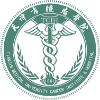Research ArticleOriginal Article
A machine learning model to predict efficacy of neoadjuvant therapy in breast cancer based on dynamic changes in systemic immunity
Yusong Wang, Mozhi Wang, Keda Yu, Shouping Xu, Pengfei Qiu, Zhidong Lyu, Mingke Cui, Qiang Zhang and Yingying Xu
Cancer Biology & Medicine March 2023, 20 (3) 218-228; DOI: https://doi.org/10.20892/j.issn.2095-3941.2022.0513
Yusong Wang
1Department of Breast Surgery, The First Hospital of China Medical University, Shenyang 110001, China
Mozhi Wang
1Department of Breast Surgery, The First Hospital of China Medical University, Shenyang 110001, China
Keda Yu
2Department of Breast Surgery, Fudan University Shanghai Cancer Center, Shanghai 200032, China
Shouping Xu
3Department of Breast Surgery, Harbin Medical University Cancer Hospital, Harbin 150081, China
Pengfei Qiu
4Breast Cancer Center, Shandong Cancer Hospital and Institute, Shandong First Medical University and Shandong Academy of Medical Science, Jinan 250117, China
Zhidong Lyu
5Breast Center, The Affiliated Hospital of Qingdao University, Qingdao 266003, China
Mingke Cui
6Department of Breast Surgery, Liaoning Cancer Hospital and Institute, Shenyang 110801, China
Qiang Zhang
6Department of Breast Surgery, Liaoning Cancer Hospital and Institute, Shenyang 110801, China
Yingying Xu
1Department of Breast Surgery, The First Hospital of China Medical University, Shenyang 110001, China

References
- 1.↵
- 2.↵
- Geoerger B,
- Kang HJ,
- Yalon-Oren M,
- Marshall LV,
- Vezina C,
- Pappo A, et al.
- 3.
- 4.↵
- 5.↵
- Mittendorf EA,
- Zhang H,
- Barrios CH,
- Saji S,
- Jung KH,
- Hegg R, et al.
- 6.↵
- Schmid P,
- Rugo HS,
- Adams S,
- Schneeweiss A,
- Barrios CH,
- Iwata H, et al.
- 7.↵
- Adams S,
- Gray RJ,
- Demaria S,
- Goldstein L,
- Perez EA,
- Shulman LN, et al.
- 8.↵
- 9.↵
- Wang M,
- Pang Z,
- Wang Y,
- Cui M,
- Yao L,
- Li S, et al.
- 10.↵
- Cortazar P,
- Zhang L,
- Untch M,
- Mehta K,
- Costantino JP,
- Wolmark N, et al.
- 11.↵
- 12.
- Mellenbergh GJ,
- Adèr HJ
- Lodder P.
- 13.↵
- Schmitt P,
- Mandel J,
- Guedj M.
- 14.↵
- Torgo L.
- 15.↵
- Were K,
- Bui DT,
- Dick ØB,
- Singh BR.
- 16.↵
- Kuhn M,
- Wing J,
- Weston S,
- Williams A,
- Keefer C,
- Engelhardt A, et al.
- 17.↵
- 18.↵
- 19.↵
- Harrell FE Jr..
- 20.↵
- 21.↵
- Batista GEAPA,
- Prati RC,
- Monard MC.
- 22.↵
- Fang F,
- Wang W,
- Chen M,
- Tian Z,
- Xiao W.
- 23.↵
- 24.↵
- 25.↵
- Muntasell A,
- Rojo F,
- Servitja S,
- Rubio-Perez C,
- Cabo M,
- Tamborero D, et al.
- 26.↵
- Chen DS,
- Mellman I.
- 27.↵
- 28.↵
- Xie G,
- Dong H,
- Liang Y,
- Ham JD,
- Rizwan R,
- Chen J.
- 29.↵
- Chan IS,
- Knútsdóttir H,
- Ramakrishnan G,
- Padmanaban V,
- Warrier M,
- Ramirez JC, et al.
- 30.↵
- Yu M,
- Pan H,
- Che N,
- Li L,
- Wang C,
- Wang Y, et al.
- 31.↵
- Slattery K,
- Woods E,
- Zaiatz-Bittencourt V,
- Marks S,
- Chew S,
- Conroy M, et al.
In this issue
A machine learning model to predict efficacy of neoadjuvant therapy in breast cancer based on dynamic changes in systemic immunity
Yusong Wang, Mozhi Wang, Keda Yu, Shouping Xu, Pengfei Qiu, Zhidong Lyu, Mingke Cui, Qiang Zhang, Yingying Xu
Cancer Biology & Medicine Mar 2023, 20 (3) 218-228; DOI: 10.20892/j.issn.2095-3941.2022.0513
A machine learning model to predict efficacy of neoadjuvant therapy in breast cancer based on dynamic changes in systemic immunity
Yusong Wang, Mozhi Wang, Keda Yu, Shouping Xu, Pengfei Qiu, Zhidong Lyu, Mingke Cui, Qiang Zhang, Yingying Xu
Cancer Biology & Medicine Mar 2023, 20 (3) 218-228; DOI: 10.20892/j.issn.2095-3941.2022.0513
Jump to section
Related Articles
- No related articles found.
Cited By...
- No citing articles found.










